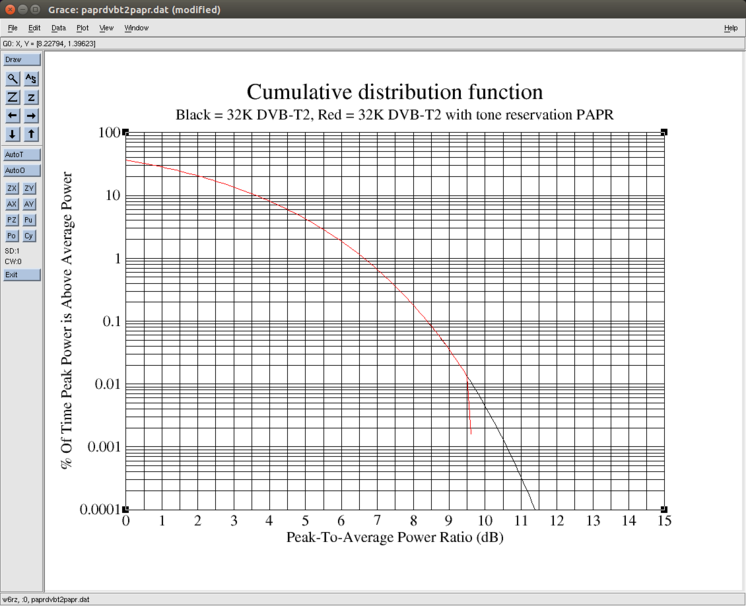CCDF (Complementary Cumulative Distribution Function) is often
used to show PAPR probability. Here's what the GNU Radio DVB-T2
transmitter looks like at 32K (27841 active) carriers with an
without tone reservation PAPR reduction.

Ron
On 03/27/2018 02:09 AM, Müller, Marcus
(CEL) wrote:
On Fri, 2018-03-23 at 14:21 -0700, Martin Braun wrote:If you've increased the number of carriers, PAPR also goes up (a bit).Yep, by the same factor as you increase the number of carriers (proof idea: time-symbol with worst PAPR is the discrete dirac over the vector of FFT length N. That has a PAPR of N/1 = N if freq domain samples were amplitude-limited to 1.) The probability to hit a PAPR that bad is, however, limited. Considering an M-PSK modulation on the N subcarriers. Then there's a total of M^N possible time-domain OFDM symbols, but only M·N of these are worst-PAPR, so P(worst PAPR for N carriers) = M·N/M^N = N / M^(N-1) assuming equally likely symbols. Since M^N pretty certainly grows faster than N, your likelihood of ending up in the "worst PAPR" scenario actually drops with N. The story looks a bit different if you're not interested in the worst- PAPR-symbol, but in all symbols that have a PAPR worse than some threshold, e.g. 20dB. Especially for LTE, there's a lot of simulative/monte carlo PAPR>threshold curves, as things like trading clipping for amplifier efficiency plays a very commercially relevant role there. Best regards, Marcus